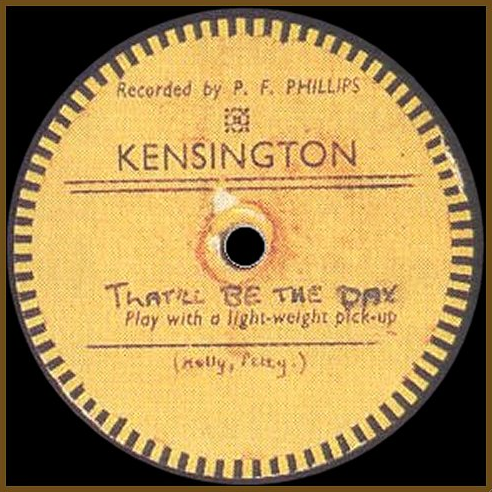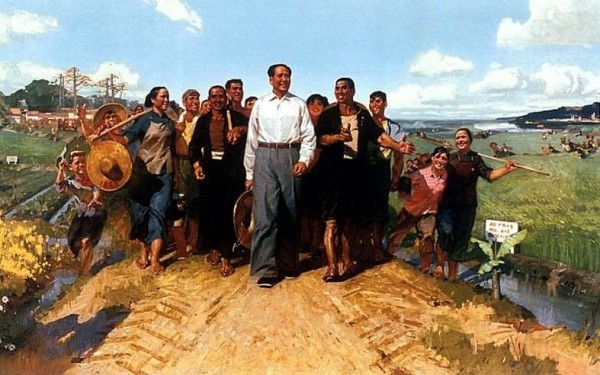He traveled across Southeast Asia, on foot ◆ From The Diary of Winston Fiore
Bloomington-native Winston Fiore recently completed a 5,000-mile trek across Southeast Asia. After graduating from Bloomington North High School, Winston joined AmeriCorps, America’s voluntary national service program. In 2007, he enlisted in the Marine Corps and spent three weeks training in Senegal. As a middle-class American, his eyes were opened by the sight of children scavenging through garbage and women carrying water on their heads for great distances. Amid the poverty and cultural differences that surrounded his experience there, Fiore found himself inspired to make global changes — in his own way. After returning from duty in Afghanistan last year, Winston decided to form his own charity project and then embarked on his 5,000-mile walk, which he calls Smile Trek, in an effort to raise funds and awareness for facial-reconstructive surgeries in the developing world.

Winston Fiore
■
Winston’s parents own Bloomington’s legendary Le Petit Café where Winston will be hosting a benefit dinner on Thursday, March 7; all proceeds will be donated to the International Children’s Surgical Foundation. ICSF’s founder and principle surgeon, Dr. Geoff Williams, will speak. For more information about the benefit or to make a reservation contact Winston at (812) 272.2686 or at winstonfiore@gmail.com
What follow are excerpts from Winston’s blog describing some of his experiences along the road.
◆
Locals often ask me what I’m up to. Apparently a westerner walking up to a roadside eatery donned in a bulky load-bearing vest in middle-of-nowhere rural Malaysia is not a common scene. So I tell them I’m walking across Southeast Asia. Without fail, they reply, “walking?!”, with emphasis on the second syllable, as if their incredulousness doesn’t kick in until half way through the word. “Yes, walking.”
Refined sugar fuels the Malaysian. It is a force of habit, a bien-entendu, a fact of life. Malaysians go so far as to add simple syrup to their coconut water, and their tea makes Sunny Delight taste like distilled water. “Milk” refers to a pallid, condensed corn syrup that is added to tea/coffee to make it even sweeter. I learned long ago to simply preface every beverage order with, “No sugar please,” no matter how ridiculous such a request may seem. I once came across real cow’s milk – a rare find – at an eatery and ordered a glass. “Surely,” I naively thought, “I don’t need to specify that I don’t want sweetener added to a glass of milk.” The glass arrived with a halfinch mound of sugar grains caked to the bottom. Sometimes, beverages arrive with added sugar even after my precautionary request. Most likely, this is due to force of habit, but I like to picture the shopkeep in the back, wittingly adding sugar by the spoonful, shaking his head as he chuckles to himself, “Silly American, asking for no sugar in his coffee. He has obviously lost his way, but I will show him the light.”
The rainy season has finally arrived, and with it, Murphy’s Law. Thick black clouds may billow across every square inch of sky, but taking preemptive cover only postpones the downpour. Water doesn’t fall until the instant I decide to begin walking again. A particularly memorable instance occurred a couple weeks ago. The sky betokened a thunderstorm, as usual, and a long bridge lay ahead of me. I decided to press on, fingers crossed that I’d come across shelter on the other side in case of rain. Naturally, the sky fell the minute I reached the top, and the landscape before me was roofless as far as the eye could see. I walked for miles, sandwiched between never-ending oil palm plantations. It was approaching nightfall, I was drenched, and any promise of dinner seemed long gone. As I began accepting the fact that I’d be camping on yet another plantation, which I hate doing because they are teeming with mosquitos, a nondescript road-sign appeared out of nowhere. On it were the words “Teluk Intan Golf & Country Club” with an arrow pointing down an intersecting backroad. Through some twisted sense of humor, the gods, having just made my last two hours a living misery, were now dangling a carrot. With nothing to lose, I took the hint.
A secret garden unfolded before me: mowed grass, manmade lakes, a swimming pool, sports cars. I entered the massive building that stood at the head of the country club. Not only was the house restaurant open for business, but the owner bought me dinner, let me use the showers, and allowed me to set up camp in the lobby! I took advantage of the powerful ceiling fans, and my boots, socks, and clothes were bone dry by the time I hit the road the following morning. It’s a funny thing when such poor fortune is so quickly reversed by good luck.
I spent one night in a Muslim graveyard. I hadn’t intended to, but every once in a while, you get caught in an urban area when the sun goes down. In towns, where prospective campsites are few and far between, cemeteries are a godsend. They’re quiet (dead quiet), secluded, dimly lit, and generally unpopular at night. Plus, what better way to fall asleep than to be surrounded by people who have been sleeping for a very long time? I was out of there by sunrise.
◆
Entering Laos from northern Thailand was quite the snafu. I navigate with Google walking directions, which had been reliable to a T up to that point. How Google went from infallible accuracy to epic failure in one fell swoop is beyond me, but that’s exactly what happened. Somehow Google Maps displayed, not one, but five imaginary bridges linking Vientiane to Thailand! One of these was incorporated in their walking directions from Bangkok to Laos’s capital, so when I got to the river dividing the two countries and could not find the bridge that was supposed to lead me across, I went through all five stages of grief before finally hitchhiking to the nearest real bridge (20 miles in the opposite direction)
It’s funny because a half-hour before this discovery, two women in a pickup truck pulled over to ask me where I was headed. “Laos!” I exclaimed. “You’re going the wrong way,” they insisted. “No,” I assured them, “there’s a bridge right up ahead.” After some time trying to convince me of the opposite, they finally drove off in disbelief. “Wow,” I thought to myself in amazement, “it’s incredible that natives of this very area aren’t even aware of the transnational bridges in their own backyard!”
◆
I stepped on a snake in northern Thailand. I was walking at night and noticed what I thought was a bamboo stalk on the road shoulder (this is quite common). The object was similar in width, straight in structure, and completely motionless. I ended up stepping on it, and it quickly sprung out from under me. It was the most terrifying part of the trek so far. What made it terrifying wasn’t the fact that I stepped on a snake, but the fact that I stepped on a snake that I thought was a stalk of bamboo. Having one’s perceived reality so abruptly betrayed by one’s physical reality is absolutely petrifying. Can you imagine sitting on a fur couch that ends up being a live grizzly? Or stepping out onto a field of grass that is actually a pond covered in duckweed? This experience instilled in me a deep respect for Jumanji players.
◆
I saw a Buddhist monk smoking a cigarette the other day, which was odd because I don’t usually think of Buddhist monks as smokers. If I were a tobacco lobbyist, I would exploit this image for all its worth. I thought of other monks out there who don’t cross my mind. Are there Buddhist monks in prison? If so, what do these incarcerated monks look like? Hulking muscles and Nirvana tattoos clad in an orange toga and flip-flops would seem contradictory, but who knows…
◆
I’m beginning to scare the children. Around the time school lets out, it’s not uncommon for me to share the roadside with clusters of kids headed back home after class. Over the course of a half hour, the mass of schoolchildren will diffuse and I will end up gaining on a small group of three or four kids, one of which will turn around and notice me in the distance. Curiosity ensues, and everyone in the ensemble will begin turning around sporadically to behold their new pursuer. Once I get into the 30-yard range, they begin running away from me, stopping once they feel like I’m far enough behind them, and resuming once I approach again. This pattern usually continues until they turn off the main road to where their homes presumably are. But on one occasion, a group of kids stopped walking entirely and waited anxiously on the side of the road for me to pass them. I could detect the air of panic that had overtaken their conversation, “Look he’s obviously not going to stop following us, and every time we run away he just keeps catching up, so let’s just park ourselves right here and stare him down as he walks by.” I haven’t had children run away from me since that day my mom packed squid as my school lunch.
The Chinese know how to build cities. This was my first observation after a month in Vietnam, where the infrastructure was… dated, to put it charitably. The amount of construction happening in China right now is unreal; the country is one big public works project. Not only that, but the Chinese appear to be future-proofing their cities, building enormous avenues that, while underutilized today, will undoubtedly fill up as cars continue to become more affordable to China’s growing middle class. Many of these gargantuan avenues are built on the outskirts of large cities in anticipation of the development to follow. It is comical to be trekking down a deserted Champs Elysees biding its time until Paris is built.
Just as in previous countries I had walked through, the nicer restaurants in China boasted food photography in their menus. Because I don’t read Chinese, I would depend on these photos to know what I was ordering, which was problematic because 90% of the time, the dishes that were brought to me looked nothing like the photo. The most extreme case was a time I ordered a banana split at a UBC Coffee, a prevalent restaurant chain throughout China. The picture was magical: a festive bowl bursting at the seams from the generous vanilla, chocolate, and strawberry scoops that filled it, drowned in rich chocolate sauce and buried under a heap of whipped cream, pierced with chocolate-filled wafer sticks and flanked by two hearty banana halves. My mouth watered as I waited with impatience for this bowl of sin to appear before me. The waiter returned promptly, tray in hand, but what he produced was of a more modest nature: three quarter-inch, perpendicularly sliced, morsels of banana topping two barren scoops of freezer-burned vanilla ice cream. Nothing more. I pointed out the disparity between the photograph and this naked dessert to my server, who spoke passable English. “It require some… imagination,” he told me!
An insightful window into Chinese culture was opened at another UCB Coffee in Fuzhou. This was my final destination in China, so I was well versed in menus’ unrealistic food portraits by this point. But my low expectations didn’t make me crave ice cream any less, and I found myself in a conundrum. One dessert option boasted whipped cream, but the ice cream flavors did not tempt me. Another option had the scoops I desired but whipped cream was not in its description. Luckily, my server was majoring in English at a local university, so communicating my request that whipped cream be added to the latter option went smoothly. “I’ll pay extra,” I assured him, to which he replied that he would need to consult his manager. When he returned a few minutes later, the twinkle in his eye had evaporated, “Sir, I’m sorry; we don’t have that computer button in our system.” I stared at him blankly and listened for the hum of a cooling fan from within his chest cavity. I inspected his waiter uniform for any protruding hydraulic wires. He seemed human enough. “Well, this is going to sound crazy, but I’m willing to bet that if you walk through those kitchen doors and talk to the cooks in person, they’ll be able to throw some whipped cream on there.” His countenance showed little promise when he returned from the kitchen moments later, “Sir, I’m afraid the kitchen manager is gone for the day, but even if he were here, he would have to call the owner of this branch for approval.” Everything I knew about the world crumbled. The decision to add whipped cream to a dessert would have to go through the restaurant owner because they didn’t have a button in the computer. My server was very nice, and very eager to converse with a native English-speaker, so he proceeded to explain how this highly centralized approach to decision-making was quite common in China. Those with power flaunt it and feel the need to remind subordinates of their status on a regular basis. Even the trivial decision to add whipped cream, if made by a waiter or cook autonomously, could cause an insecure boss to feel threatened. “Here, someone could get fired over this, maybe just to make an example of them,” my waiter explained. I nursed my Tsing Tsao, grateful to be from a land where initiative was generally rewarded with a promotion.
◆
I don’t generally sightsee on days I walk, as making use of my day to cover ground is a priority, but a massive Buddhist temple snuck up on me one afternoon a few weeks into crossing China. Its size alone sparked my curiosity, and the serenity it exuded made it too intriguing to resist. An imposing staircase linked the temple’s distant threshold to the ground before me, and as I ascended the deserted steps, I felt like Bruce Wayne in the opening scene of Batman Begins, in which he pilgrimages to a remote ninja temple in the mountains to seek training. What this movie scene doesn’t reveal, however, are the brand new SUVs parked at the entrance, the free buffet, and sneaker-clad monks texting on their mobile phones, all of which awaited me at the summit. Any hopes I had of being greeted with an anachronistic martial arts montage after the climb were nipped in the bud. The temple was gorgeous, though, and the buffet’s spread was handsome. After leaving a donation, I made my way back down the stairs to resume trekking. When I later told my father the bit about the monks texting on their phones, he bellowed, “They’re texting Buddha!”
◆
Hong Kong was a breath of fresh air: uncensored internet, chocolate, coffee, clean streets, bars that knew how to prepare cocktails, people who spoke English. Still, I couldn’t see myself living there. I’m a pedestrian at heart, and Hong Kong is the least pedestrian-friendly city I’ve ever stepped foot in. It’s like walking through an M.C. Escher painting. Sidewalks outright end. This is not an exaggeration. Literally, you’ll be walking along a sidewalk, and it will end without warning. You’ll see where you want to go from where you’re standing, but you’ll have no idea how to go about getting there, like Jennifer Connelly’s character in Labyrinth, who can clearly see the Goblin King’s castle in the beginning but has to navigate a maze to reach it. Your only hope is to retrace your steps in search of some tunnel or underpass or overpass or talking door knockers that might get you one step closer to your destination. Even in those rare instances when you can discern a path to your endpoint, there will be obstacles. You’ll have to hurdle sidewalk rails, benches, and landscaping, all while keeping a watchful eye for police officers all-too-eager to ticket jaywalkers.
I’ve never met a breed of city dwellers as obedient to pedestrian protocol as Hong Kongers. Masses of cutthroat businessmen, veteran financiers, movers and shakers, kings of the hill, merciless men who clawed their way to the top, tooth and nail, and who answer to no one, men with booming voices who slap backs, who eat market share for breakfast and close mergers on their lunch breaks, who don’t get pushed around by anyone and who don’t take “no” for an answer; these men, when confronted by the little red man in the pedestrian traffic light, become sheep. The fact that there isn’t an automobile in sight matters not; they kneel before this little red man and adhere to his every command. For 70 seconds, their undivided attention, their world, their lives, are his.
◆
I had my share of preconceived notions before coming to ‘Nam, mostly derived from war movies: conical hats, rice paddies, and hot humid weather. It is true that the stereotypical hats are worn by most in the countryside, and that the countryside is composed almost entirely of rice paddies, but what the war movies don’t tell you is that it gets cold in Vietnam! I actually had to spring for a fleece, and even with a fleece and my warm-weather sleeping bag, it was too cold to camp. Luckily, guesthouses, or “Nha Nghi”, averaged no more than $10/night.
Pale lager is the only kind of beer I enjoy, and in Vietnam, I discovered the best pale lager I have ever encountered anywhere in the world in my entire life: Bia Hoi, or “fresh beer.” Sold on street corners across the country, this stuff is distributed to vendors daily and directly from the brewery. It is hands-down the freshest beer I have ever tasted, and the price is almost negligible. Vendors purchase 5-gallon kegs for the equivalent of $7! In NYC, it’s not uncommon for a pint to cost $7…
I am not a fan of Vietnamese coffee. A dysfunctional marriage between a failed French press and a broken coffee seep, the brewing contraption is a terrific flop in human ingenuity. A nine-year-old chimpanzee with a learning disability could not invent a less efficient apparatus. Grounds are placed inside a metal filter that is affixed atop each individual cup, an ounce or so of hot water is poured in, and the brewed coffee drips into the cup… one… drop… at… a… time. Not only does it take twenty minutes to brew an ounce of coffee, but the beverage is stone cold by the time it has seeped through the filter.
To make matters worse, coffee is not generally offered in eateries and food is not generally offered at cafes. So instead of being able to allow the coffee to brew at the table while I ate breakfast, I would have to eat breakfast at one place and relocate to a cafe afterwards only to stare for twenty minutes at my cup as the coffee brewed one… drop… at… a… time…
▲
The Ryder, February 2013












